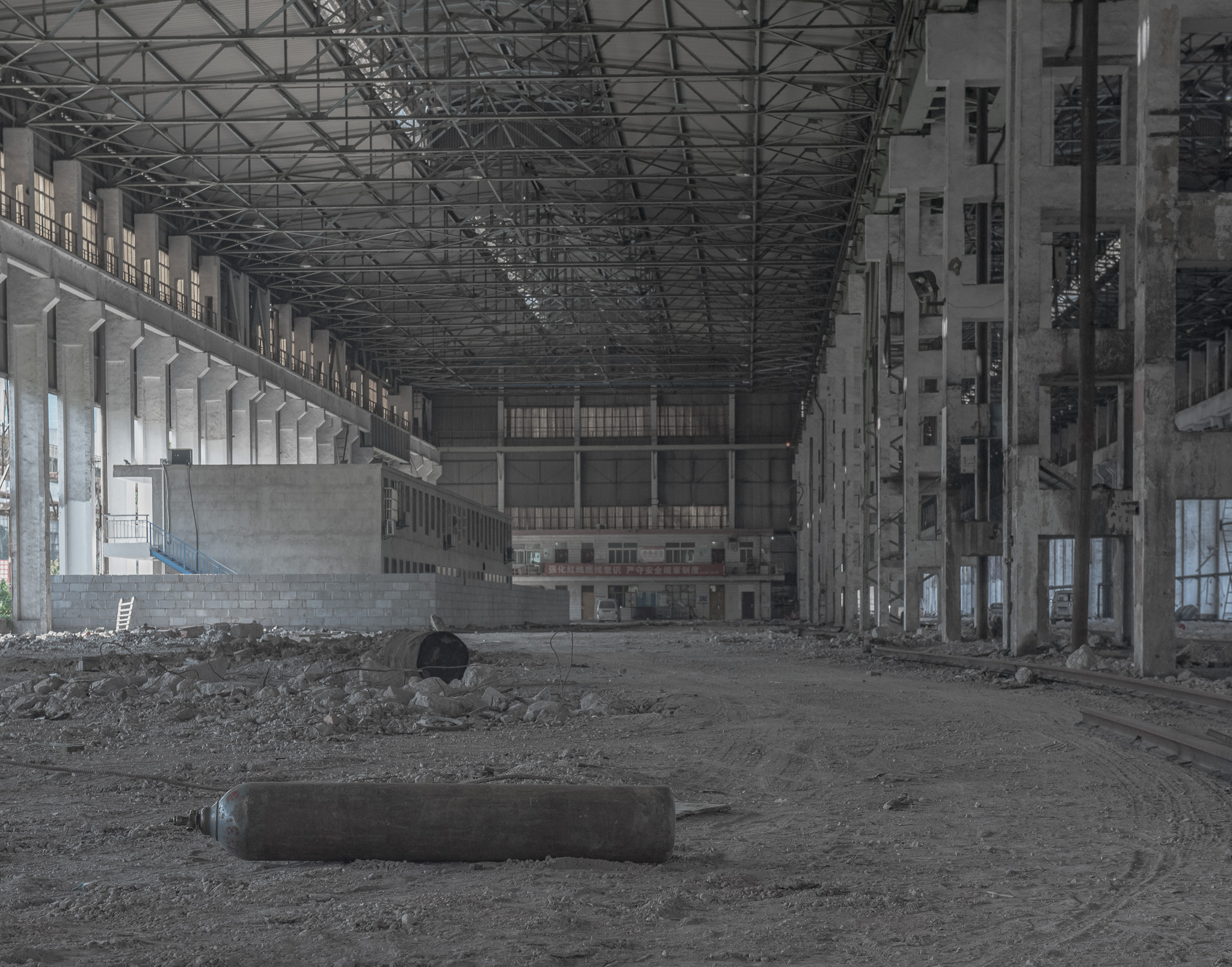
This sculptural installation originates from research and material collection at the Hanyang Iron and Steel Plant in Wuhan. As one of China’s earliest modern steel enterprises, the plant represents the country’s industrialization efforts, having undergone cycles of globalization, deindustrialization, and eventual abandonment. Today, its ruins stand as silent witnesses to the shifts in capital, labor, and technological legacy.
From the abandoned factory site, I gathered corroded mechanical parts, rusted steel beams, broken cast-iron components, charred wires, and obsolete tools—fragments once integral to the production line, now left as relics of a bygone era. In this sculptural installation, these found objects are reassembled and elevated on slender metal rods, creating a suspended state that oscillates between archaeological remains and futuristic organic forms. These floating metal structures resemble both the remnants of industrial civilization and speculative mechanical creatures, urging reflection on the life of technology, the politics of ruins, and the forgotten histories of labor.
Extracting materials from ruins and granting them new existence is an act of resistance against time. The history of the steel plant is not just a record of technological advancement but also a complex entanglement of human labor, machinery, capital, and the state. Through sculptural intervention, I seek to uncover these hidden narratives and explore how industrial heritage can be reinterpreted in contemporary contexts—does it stand as a monument to lost glory, or as an unfinished future still in the making?
From the abandoned factory site, I gathered corroded mechanical parts, rusted steel beams, broken cast-iron components, charred wires, and obsolete tools—fragments once integral to the production line, now left as relics of a bygone era. In this sculptural installation, these found objects are reassembled and elevated on slender metal rods, creating a suspended state that oscillates between archaeological remains and futuristic organic forms. These floating metal structures resemble both the remnants of industrial civilization and speculative mechanical creatures, urging reflection on the life of technology, the politics of ruins, and the forgotten histories of labor.
Extracting materials from ruins and granting them new existence is an act of resistance against time. The history of the steel plant is not just a record of technological advancement but also a complex entanglement of human labor, machinery, capital, and the state. Through sculptural intervention, I seek to uncover these hidden narratives and explore how industrial heritage can be reinterpreted in contemporary contexts—does it stand as a monument to lost glory, or as an unfinished future still in the making?

